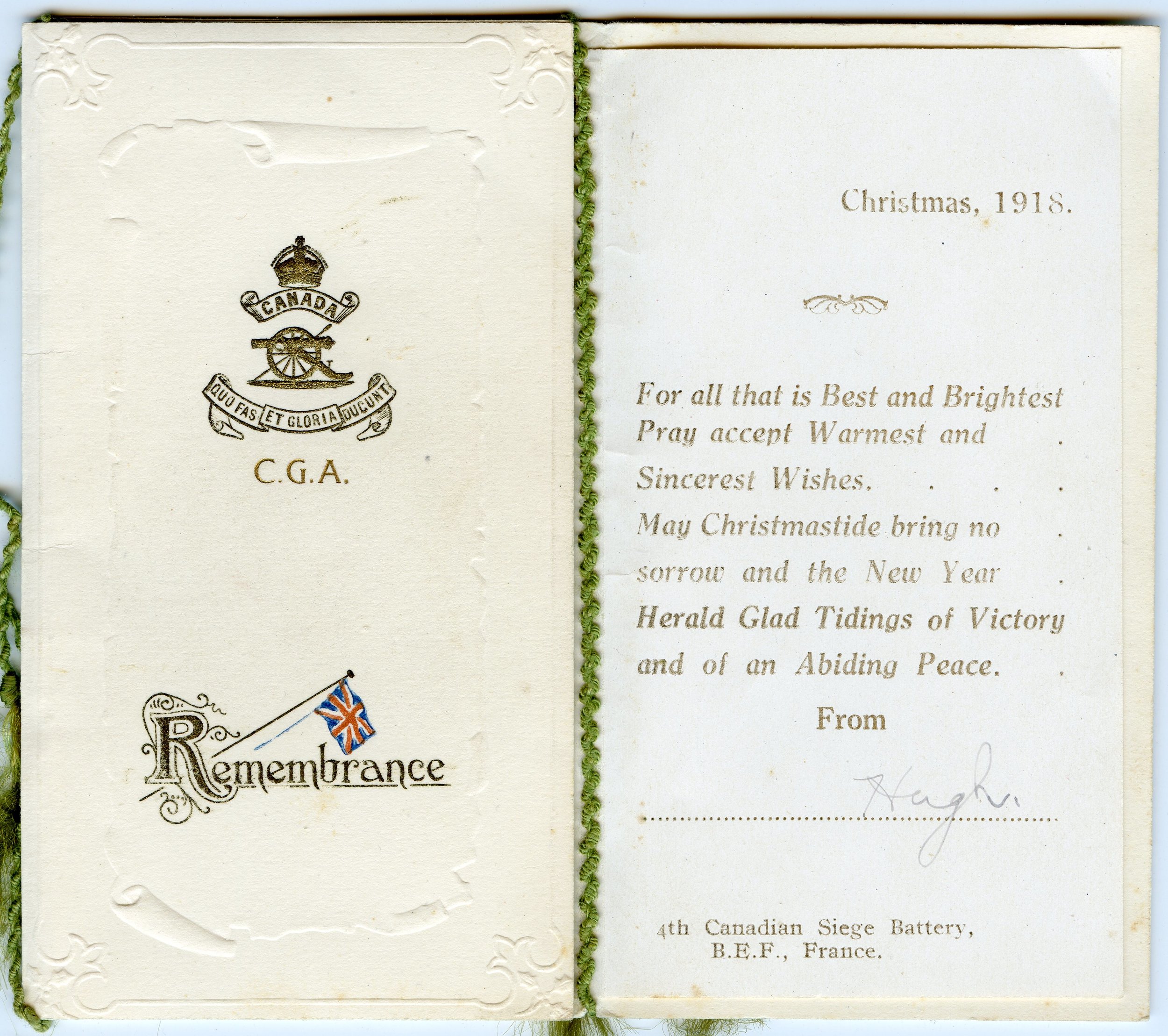“Christmas Cards from World War I soldier, Hugh Wright”
submitted by great niece, Dawne (Wright) McLean
During the years of the First World War (1914 -1918) when the soldiers had to spend Christmas far from home, separated from their families and friends, Christmas cards were important reminders that there was life outside the trenches and outside of the war.
Besides my great uncle's many treasured WWI letters that have been safely kept for over 100 years, I also treasure the special Christmas cards that he sent from overseas. Hugh Wright sent the embroidered silk “A Very Merry Christmas” card on Nov. 24, 1915. The embroidered flags of Britain, France and Belgium form the colorful bow on the basket of holly leaves. The embroidered silk postcards were very popular with the soldiers during the First World War because of their beauty and uniqueness. Some of these these souvenir cards were specifically made with personal messages “To my wife”.... “With love” ...”To my Dear Mother” and of course for special occasions, as well as patriotic sentiments. They were made by the women in France and Belgium, but most commonly made in France and were sold in nearly every shop. The back of the card had space for a message and address. The cards could be stamped and mailed, but usually the soldiers wrote a message and mailed the handcrafted “WWI silks” with their regular letters in envelopes. The silk card with the embroidered message “We'll be happy once again never mind” was probably sent by Hugh in December 1918. Even though the war had ended... the soldiers would still spend another Christmas overseas.
During World War I, the battalions of the Canadian Expeditionary Force had their own Regimental Christmas cards. They were professionally printed cards which the soldiers would order to send their good wishes to family and friends. Some of the cards were quite elaborate with embossed badges and designs.
While serving in the 4th Canadian Siege Battery, Hugh Wright sent two World War I regimental cards, Christmas 1917 and Christmas 1918. The regimental badge of the 4th Siege Battery is embossed within the maple leaf on the 1917 card. Printed with the inside message are the names of the four battles in which the 4th Siege Battery fought.
On the Christmas 1918 card the word “Remembrance” is embossed, a suitable word as the war was now over. The message - “May Christmastide bring no sorrow and the New Year Herald Glad Tidings of Victory and of an Abiding Peace”. Hugh personally signed this card and sent it to his family. Even though the war had ended, to transport over 260,000 Canadian military from overseas would take months! Hugh received his discharge on May 10, 1919 on his 24th birthday and returned to the family farm in Shepody. Years later, he was light keeper on Grindstone Island from 1936-1950.





